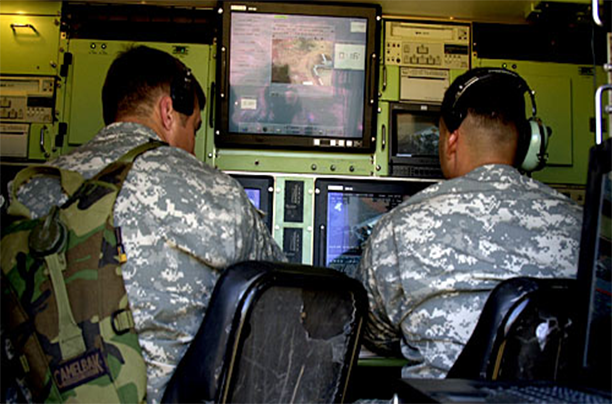Increasing the number of autonomous vehicles controlled by individual operators
The Situation

Experience in Operation Iraqi Freedom demonstrated the military advantages of unmanned aerial vehicles (UAVs). For example, the single Global Hawk that operated in Operation Iraqi Freedom flew only 3% of all aircraft imagery-collection sorties and 5% of high-altitude missions, but collected data on 55% of all air-defense-related time-sensitive targets [Rockwell]. To continue this success and expand future UAV capability, Department of Defense mission planners desired to have larger numbers-called swarms-of UAVs operating in conflicts. Since each UAV required an Air Vehicle Operator in addition to other support staff and payload operators, expanding the number of UAVs in a theater would increase the number of operators and support staffers needed. Alleviating this problem required significant advances in onboard vehicle control and planning technology as well as the development of new, intelligent human system interfaces that enabled the user to understand the output from planning software in the context of the tactical situation and intervene or direct the UAV when required.
The Charles River Analytics Solution
To meet these needs, DARPA sponsored the Mixed-Initiative Control of Automa-teams (MICA) project, which Charles River Analytics supported under a subcontract to Charles Stark Draper Laboratory. Charles River Analytics first spent time with UAV operators to understand the information they use to make decisions about how to control their vehicles. We then built a system, which included intelligent agents that synthesized raw data into the higher-level information UAV operators need, and presented the information in a way that used innovative human factors design principles to allow the operator to make rapid judgments for multiple vehicles at a time.

The Benefit
Using the Charles River Analytics human-system interface (in conjunction with Draper’s control algorithms), UAV operators can understand the complex inter-relationships between vehicles and teams, and can set priorities and goals for the vehicles using high-level mission goals rather than using low-level waypoints. This ability allows an individual vehicle supervisor to supervise larger numbers of vehicles by focusing on the mission as a whole rather than the actions of separate vehicles. The net result is increased UAV surveillance, a larger number of time-sensitive targets destroyed, and fewer operators needed to carry out the tasks.
